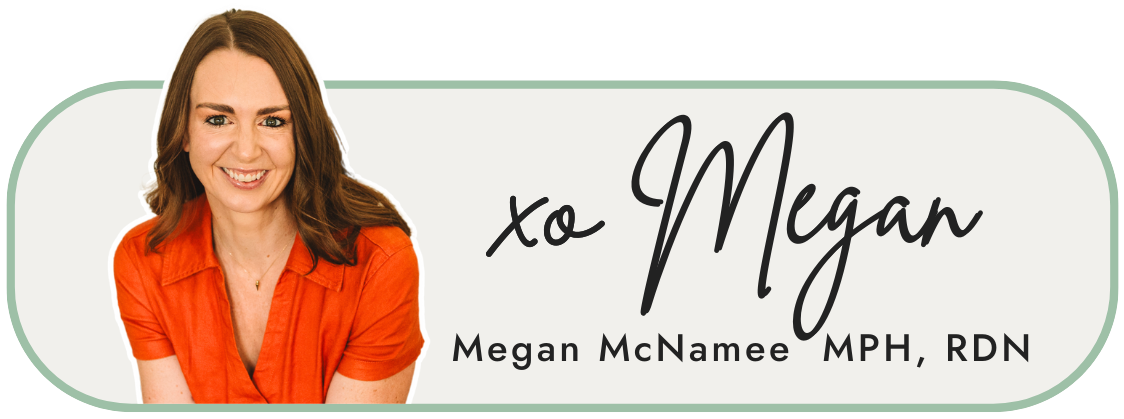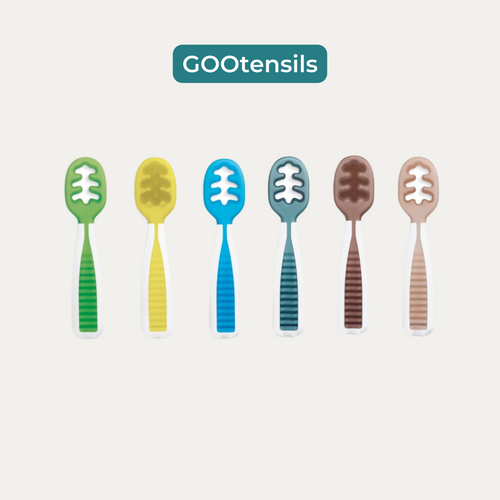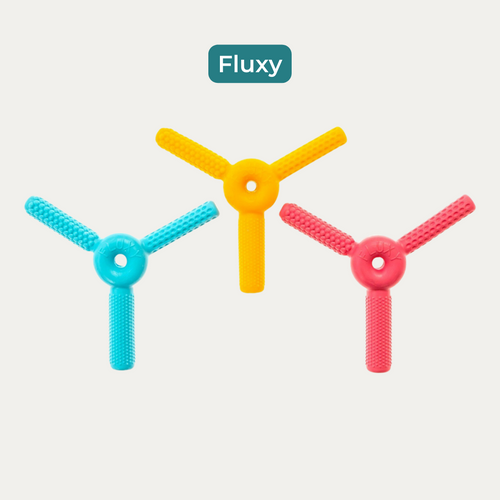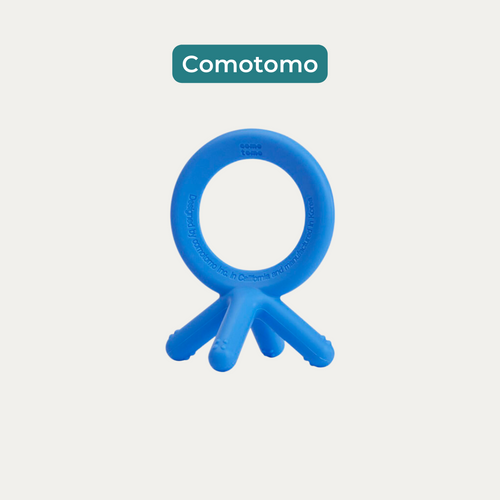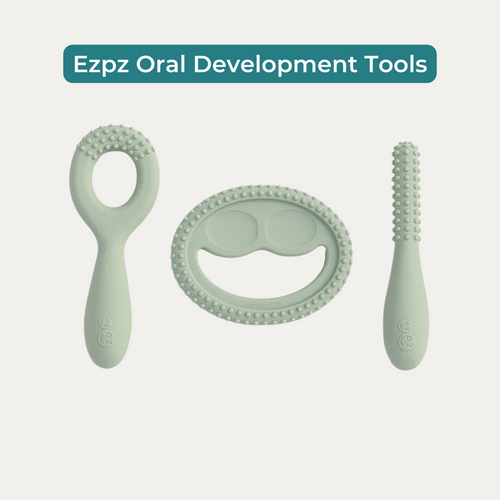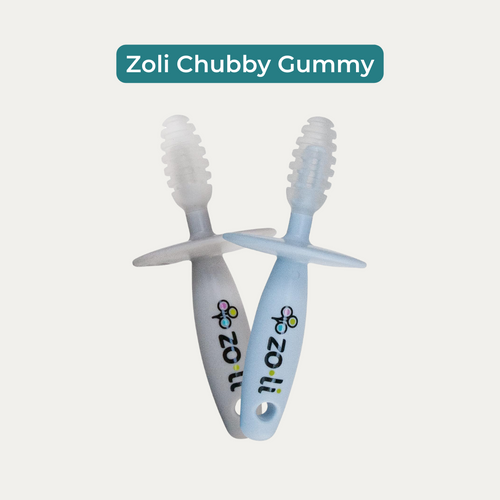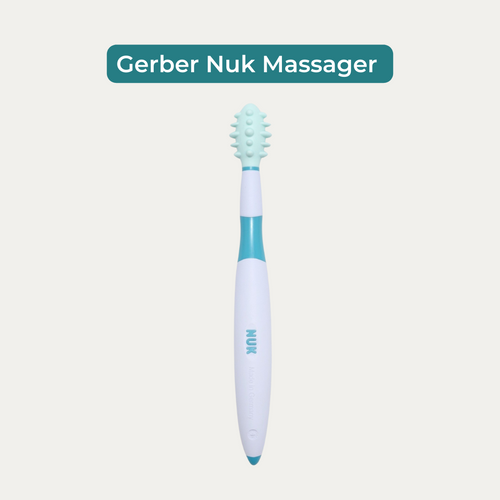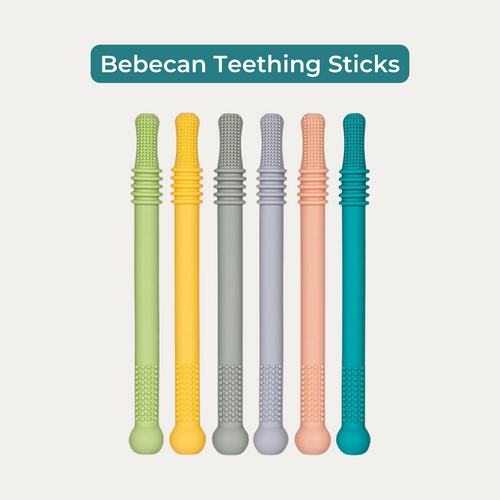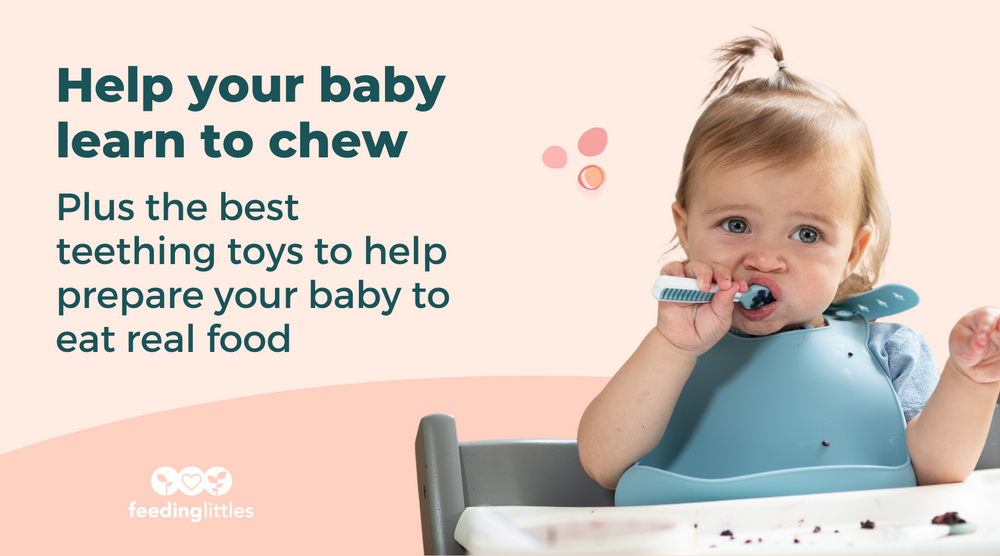
In our infant course, we talk about offering babies soft finger foods. Many families wonder, “How can babies eat whole – and not pureed – food without teeth?”
We love to teach parents about Baby-led Weaning, or infant-self feeding, which involves letting babies feed themselves. Parents offer their baby strips of soft food or utensils loaded with soft food that baby can bring to their own mouth to eventually chew and swallow. Baby-led Weaning might help prevent picky eating and allow baby to better listen to their satiety cues.
How does a baby chew if they don't have teeth?
Most babies get their front bottom teeth as first teeth, and parents worry that if they don't have teeth, their baby won't be able to eat anything except pureed foods. However, humans don't chew with our front teeth; we chew food in the back part of our mouth where our molars are. Thus, babies can chew soft foods - they just use the strength of their jaw and chew food without having chewing teeth yet!
Psst - babies' gums are strong because there are teeth right below the gumline. You know this if your baby has ever "bitten" you without teeth!
When your baby first eats food, whether it's a strip of avocado or chicken, a loaded GOOtensil of yogurt or a small spoonful of baby food, they might try to mash it against the roof of their mouth. This is not chewing, because chewing happens in the back gum area where teeth will eventually grow.
With time and practice, your baby will learn to bring food to the side of their mouth using their tongue ("lateralization") so that they can chew with their gums and eventually swallow. Some parents worry that their child doesn't know how to chew and isn't consuming much food when they start Baby-led Weaning. This is very, very common. It can take weeks to months for babies to figure out how to bring food to the side of their mouth, chew and swallow.
The best way to help babies learn to chew is by offering them solid foods at least once a day starting at 6 months and giving them time to learn. They will play with food, spit it out, gag and not consume much as first as they figure out how to lateralize with their tongue, chew and swallow.
However, there are some teething and oral-motor tools that you can use before or during solid food introduction that can help with their chewing skills.
Babies put these tools in the back corners of their mouth - where food is supposed to go - and work on lateralization and jaw strength. These tools can also help babies who are gagging frequently when solid foods are offered because it teaches babies to bring food to the side of their mouth, not straight down the center of their tongue.
We've found in practice that these teethers can make a huge difference with new eaters, especially if offered before solid food introduction. In general, we've noticed that babies who work with these teethers regularly before and during solid food introduction gag less and start chewing and swallowing food more quickly.
When do we recommend these teethers?
1. Start once your baby can put safe toys in their mouths, as early as 3-4 months. Offer them regularly leading up to solid food introduction (around 6 months).
2. Continue to offer them alongside real food so your baby continues to practice and build strength.
3. If your child is struggling to chew once you’ve introduced food (they’re spitting everything out, gagging is not getting better, they’re not swallowing food), make sure you’re letting your baby work with these teethers regularly.
Need more help? Our online Infant Course will teach you all you need to know to raise a skilled, adventurous eater!
Note: these teethers (and more) can also be found at our Amazon Shop.
Want step-by-step help introducing solids to your baby? Check out our Infant Course!
